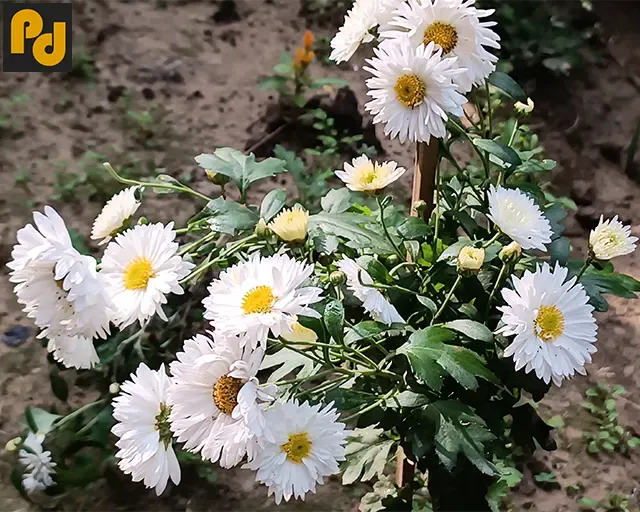Commercial floriculture: Scope and importance in India
Floriculture:
- Floriculture is an evolving branch of horticulture that deals with the farming, processing, and marketing of ornamental plants.
- The Floriculture Industry in India expands to flower production and trade, nursery and potted plants, seeds and bulbs, propagation through tissue culture, and essential oils extraction.
- Agricultural and Processed Food Products Export Development Authority (APEDA) is responsible for export promotion and development of floriculture in India.
 |
| Chrysanthemum in one of the improtant flowers grown unde floriculture |
Floriculture Industry in India:
- As per National Horticulture Database published by National Horticulture Board, during 2021-22 the area under floriculture production in India was 283 thousand hectares with a production of 2295 thousand tonnes loose flowers and 833 thousand tonnes cut flowers (Source: APEDA). Cultivation is undertaken in open farm conditions as well as state-of-the-art poly and greenhouses.
- The country has exported 21024.41 MT of floriculture products to the world for the worth of Rs. 707.81 Crores/ 88.38 USD Millions in 2022-23. U.S.A, Netherland, United Arab Emts, U.K. Germany and Malaysia were major importing countries of Indian floriculture during the same period.
- The major states of flower production in India are Karnataka, Andhra Pradesh , Tamil Nadu, Madhya Pradesh and West Bengal.
Major Flowers Yield of India:
- The main flowers of Indian floriculture industry are Rose, Tuberose, Gladiolas, Anthurium, Carnations, Marigold, Jasmine, Hibiscus, Bougainvillea, etc.
- Among all, Rose is the major "cut flower" grown all over the country. The larger fraction of the floriculture zone is used for growing scented rose.
- For cut flower use, the old rose varieties like Queen Elizabeth, Super Star, Papa Meilland, Christian Dior, Eiffel Tower, Kiss of Fire, Garde Henkel, First Prize, etc. are still prevalent.
- Gladiolus is the next most vital cut flower crop in India.
- Tuberose, a very general cut flower yield in India is full-grown mainly in the eastern part of the country i.e., West Bengal, and also in northern plains and parts of the south.
- Other leading "cut flower" piece is the orchid. Its production is limited mostly in the north-eastern hill areas and parts of Kerala and Karnataka. Some of the important orchinds grown are Dendrobiums, Vanda, Paphiopedilums, Oncidiums, Phalaenopsis, and Cymbidiums.
- Jasmine flowers in this recent trail come under slack flowers and are used in garlands and "Veni" (flower ornament for hair used by women). Jasmine's major zones are Tamil Nadu, Karnataka in the South, and West Bengal in the East.
Demand of flowers in India:
- The metros and the higher Indian cities represent major clients of flowers in the country. As a consequence of increasing urbanization and influence of western cultures, demand of flowers reaches its peek on some occasions such as Valentine's Day, birthdays, festivals, anniversaries, marriages, farewell parties, religious rituals, etc.
- A considerable amount of flowers is consumed in flavors, scents, natural color, drugs, etc.
- The major markets of flowers in India are Coimbatore, Madras and Madurai in Tamil Nadu; Trivandrum and Cochin in Kerala; and Bombay and Pune in Maharashtra; Mysore, Bangalore, and Dharwad in Karnataka; Hyderabad and Vijayawada in Andhra Pradesh. In the north Lucknow, Kannauj and Delhi are among the bigger market for flowers.
Sources
- https://apeda.gov.in/apedawebsite/six_head_product/floriculture.htm (accessed on 07-01-2024 at 22:18)
Content first created on 07-01-2024
last updated on 07-01-2024
last updated on 07-01-2024




